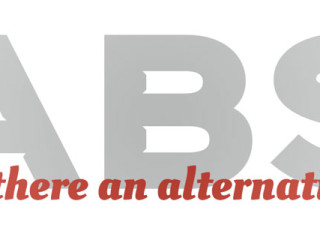In Denman v. Radovanovic, the Ontario Court of Appeal unanimously upheld the trial judge’s decision to find all three defendant physicians liable for failing to obtain Mr. Denman’s informed consent to an elective and multi-step plan of medical intervention to cure Mr. Denman’s brain arteriovenous malformation (“AVM”). This summary will focus on five key takeaways from the Court of Appeal’s decision, written by Rouleau J.A.
Basic Facts & Findings
Mr. Denman had an asymptomatic and unruptured (not bleeding) brain AVM (abnormal tangle of blood vessels). An AVM may or may not rupture, with or without treatment. If rupture occurs, some will lead to death or permanently disabling consequences while other ruptures will have only mild consequences.
In May of 2014, a group of physicians including two of the defendants, neurosurgeon, Dr. Ivan Radovanovic and interventional radiologist, Dr. Karel ter Brugge, recommended a multi-step plan of medical intervention to cure Mr. Denman’s AVM. It was established at trial that the plan involved a series of embolization procedures followed, if necessary, by surgical resection of the AVM.
In June and August of 2014, before any procedures were undertaken, Dr. ter Brugge met with Mr. Denman for purposes of obtaining his informed consent. In August and December of 2014, Mr. Denman underwent embolization procedures; both of which were performed by the defendant, interventional radiologist/neurosurgeon, Dr. Vitor Mendes Pereira. Neither procedure caused any incident, but neither cured the AVM. In January of 2015, Drs. Radovanovic and Pereira met with Mr. Denman to discuss the final step in his treatment plan, which was to be a combined procedure consisting of a third embolization followed the next day by surgical resection. On June 22, 2015, Mr. Denman underwent the first part of the combination procedure, performed by Dr. Pereira. That procedure caused the AVM to rupture and Mr. Denman to suffer a catastrophic brain injury.
The trial judge found that all three defendants failed to obtain Mr. Denman’s informed consent to treatment and that neither he, nor a reasonable person in his position, would have consented if he had been properly informed.
The Ontario Court of Appeal affirmed the decision, including all the findings and rulings from which the defendants had appealed.
Five Key Take-Aways
i. Duty of disclosure is not necessarily limited to the physician carrying out the procedure.
At trial, relying upon medical-legal literature and provisions of the Health Care Consent Act, 1996, the defendants argued that only a physician who actually administers the treatment that causes the injury can be found liable for doing so without informed consent (i.e. Dr. Pereira is the only defendant who could be liable). Both the trial judge and Court of Appeal rejected this argument. Rouleau J.A. stated (at para. 91): “…a physician not performing a procedure may, depending on the circumstances, have a duty of disclosure. Whether there is liability will depend on causation.”
The defendants further argued, in so far as Dr. ter Brugge was concerned, that the chain of causation was broken for any inadequate disclosure he may have given to Mr. Denman by the time the injury was suffered, since Drs. Pereira and Radovanovic had spoken with Mr. Denman about the risks of the combined procedure before that step which ultimately caused his loss. Affirming the trial judge’s decision to hold Dr. ter Brugge liable, Rouleau J.A. explained (at paras. 112-114):
“Because the first two procedures were carried out without injury, the chain of causation could arguably have been broken if, prior to undergoing that combined third embolization and surgical resection, Mr. Denman had been provided with correct information…
In order to break the chain of causation, both the reasonably anticipated risks of undergoing that third set of procedures and the risks of deferring treatment should have been disclosed…
Unfortunately, Mr. Denman did not receive adequate disclosure along the way, including before the third combined procedure…Accordingly, the chain of causation was not broken.”
ii. The duty to disclose can include the cumulative risk of proposed multi-step intervention.
The trial judge found that before Mr. Denman underwent the first embolization, he ought to have been told of the risks involved in carrying out the whole plan of treatment to effect a cure of his AVM and that had he or a reasonable patient in his circumstances received appropriate disclosure, treatment would not have been elected in the first place. Her Honour’s decision, however, did not make a clear finding on what the relative risks were.
The Court of Appeal affirmed the trial judge’s ruling based upon the evidence which had otherwise been cited by Her Honour’s. That evidence supported that Mr. Denman would have had to weigh an up-front, cumulative risk of 30-50% of permanent neurological deficit if he underwent the entirety of the proposed plan of medical intervention versus a risk of 40-60% amortized over his life if he did not treat the AVM. Rouleau J.A. stated (at para. 70): “In the circumstances, it is clear that neither Mr. Denman, nor a reasonable person in his situation, would have undertaken the suggested course of treatment.”
iii. Informed consent may require disclosure of statistical ranges of risk.
At trial, both parties offered evidence concerning statistical risks (e.g. the risk of rupture without treatment, the risk of rupture with various types of treatment, etc.) and what Mr. Denman was told about those risks. The defendants argued on appeal that the trial judge erred by imposing a duty to provide exact statistical probabilities to Mr. Denman.
The Court of Appeal disagreed that Her Honour had required that particular or specific statistics be disclosed and, more importantly, endorsed that the duty to disclose may in some circumstances include ranges of statistical risk. Rouleau J.A. stated (at para. 64): “Rather, what was required in this case was that an order of magnitude or reasonable range of risks involved in the proposed treatment be disclosed.”
iv. Trial judge’s decision to exclude biased expert affirmed.
The defendants appealed from the trial judge’s ruling to preclude their neurosurgical/interventional radiology expert, Dr. Gary Redekop, from testifying on the basis of bias at the conclusion of his voir dire. Amongst many other areas of concern, Dr. Redekop refused to provide standard of care opinions for plaintiffs but did so on behalf of physicians and, in fact, in this very case, had declined to review the case on behalf of the Denman family only later to agree to do so on behalf of the defendants.
The Court of Appeal rejected the defendants’ arguments that the trial judge had misunderstood the legal test and that there was insufficient evidence of bias. Rouleau J.A. stated (at para. 130): “As explained in White Burgess, at para. 50, whether an expert should be permitted to give evidence despite having an interest or a connection with the litigation ‘is a matter of fact and degree’. While another judge might have reached a different conclusion, I see no reason to interfere.”
v. $3 million cost award upheld.
The defendants sought leave to appeal from the trial judge’s $3 million cost award to the plaintiffs. For context, readers should be aware that this complex medical malpractice litigation spanned around six years; “surprises” before and during trial led to extraordinary efforts, including a continued discovery of Dr. Pereira; and the trial lasted over 25 days, culminating in the exchange of over 1400 pages of written closing submissions.
Denying leave, Rouleau J.A. stated (at para. 142): “…The award is proportionate to the complexity of the proceeding and importance of the issue raised, the $8.5 million in damages, and the work required to achieve the trial result in this case.”
Further Reading
Denman v. Radovanovic, 2022 ONSC 4401












